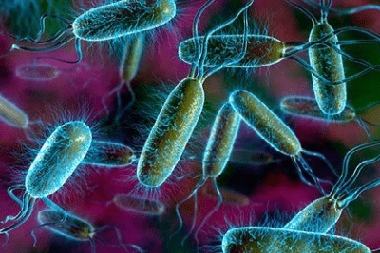Infectious diseases >>>> Prevention of bacterial infections
Prevention of bacterial infections.

Bacteria are very common organisms on our planet. The estimated number of their varieties is about a million. Approximately 10,000 strains studied and described. Species diversity and living conditions allow them to be in conditions paradoxically impossible for the life of a microorganism. The bacteria are resistant to temperature extremes, and some species can survive in extremely high or extremely cold temperatures. There are groups of bacteria that do without oxygen (aerobes), or are resistant to chemically aggressive environments due to their ability to form a protective capsule.
Such diverse living conditions of bacteria create a potential danger of colonization of the human body by these representatives of living organisms. Many of the types of bacteria have long lived with humans as symbionts, including pathogenic ones (in such cases they are called conditionally pathogenic). And up to a certain point, they do not pose a danger to the human body. Many of the symbionts have become a prerequisite for maintaining human health and are called beneficial microflora. All other bacteria are pathogens, sometimes deadly.
The danger of pathogenic types of bacteria is that they, in the course of their life, release substances that are toxic to humans (or animals). And given the high rate of reproduction of bacteria, the concentration of toxic substances increases in a short time. These terms are determined by the incubation period of various bacterial infectious diseases.
The pathways for pathogenic bacteria to enter the human body are diverse:
- during meals (improper heat treatment, stale food or spoiled as a result of improper storage, unwashed berries, fruits and vegetables)
- in case of violation of the integrity of the protective skin or mucous membranes (abrasions, punctures, cuts, tears, burns, as well as during the period of application of funds that change the structure of the skin, increasing the permeability of the skin)
- as a result of violation of sanitary standards for disinfection (by inhaling dust, water vapor, with a stream of water) or personal hygiene.
- as a result of a violation of microbiocenosis in the human body itself, when conditionally pathogenic bacteria begin to prevail in the microflora (with dysbiosis)
How to protect yourself from potential bacterial infection.
There are several ways to prevent bacterial infection:
Timely vaccination
Vaccination can prevent some very dangerous bacterial infections, which are still extremely difficult to cure, and sometimes even impossible. These are tetanus, diphtheria, scarlet fever, whooping cough and others.
Compliance with sanitary and hygienic standards
Sanitary and hygienic standards are specially designed to exclude many opportunities for pathogens to enter the human body. Some bacteria die at boiling point, others - just wash off with water or treat with an antiseptic .
Prophylaxis with bacteriophages is convenient as insurance if, for some reason, pathogenic bacteria were nevertheless introduced into the body.
Of all antibacterial agents, bacteriophage is considered the most harmless in terms of side effects. This is a microorganism that, due to its natural characteristics, uses the bacterium as a means for its own reproduction, while destroying the bacterium itself. Bacteriophages are much smaller than bacteria. For comparison, one bacterium could accommodate 100-300 bacteriophages.
How do bacteriophages "work"? They lyse (dissolve) the shell of the bacteria, inject their DNA and die. Although only one bacteriophage is required to destroy the bacterial membrane, dozens are usually attacked. Having received foreign DNA, the bacterium ceases to multiply itself, but at the same time retains the functions of respiration and energy production and begins to produce copies of the bacteriophage's DNA. After half an hour, the bacterium is destroyed, releasing about 300 new bacteriophages. Again, the bacteria are attacked, the bacteriophage multiplies and the bacteria die. The whole process is repeated until the bacteria run out. Then the bacteriophages also die.
Bacteriophages are not universal. Each bacterial strain has its own type of bacteriophage.
Usually, in order to clarify the bacterial strain against which the bacteriophage is taken , a biological analysis of the presence of these strains in a person in the body is required . But for the purpose of prevention, if it is impossible to find out this fact, you can use Intesti - bacteriophage , the solution of which contains various types of bacteriophages. The bacteriophage can be taken orally for prophylaxis, watered wounds with it, make lotions, rinse your mouth, tampon in hard-to-reach places. It is harmless and not dangerous. It is easily combined with any drugs, including antibiotics. But it is not advisable to take probiotic bacteria at the same time as taking the bacteriophage.
Sometimes the bacteriophage can cause discomfort, and in these cases it is worth suspending its use. Get carried away and take a bacteriophage - Intesty is also not worth longer than the period written in the instructions, since it contains bacteriophages to Colibacterium, and normally it should be present in a person in the large intestine in a certain amount.

Read

Read



























